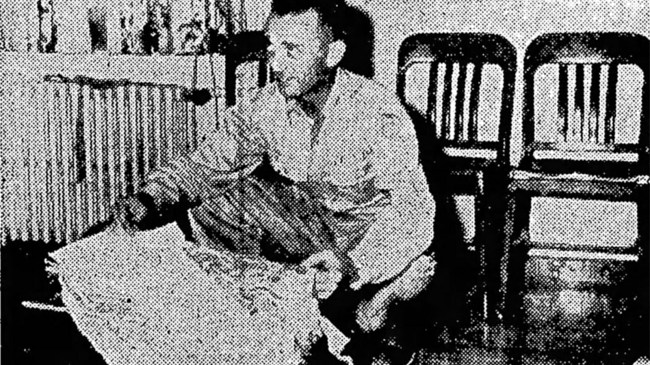Getty Image
When it comes to the subject of UFOs and aliens, the so-called Roswell incident is right up there near the top of the list of conspiracy theories.
For almost 80 years, people have been arguing over whether the United States Army lied about what actually happened in June and July of 1947.
Much of the UFO and alien speculation stems from the fact that the Army initially reported to the public that they had come into possession of a “flying disc.” That story was then retracted within a day and changed to say that what they found was actually nothing more than a weather balloon.
The conspiracy theory was further fueled in 1978 when retired Air Force officer Jesse Marcel (seen in the photo above with the alleged debris from Roswell) claimed that the weather balloon story had been a cover-up and that the crash debris the Army found was actually extraterrestrial in nature.
Now, the Pentagon’s All-domain Anomaly Resolution Office (AARO) decided that 75 years after the Roswell incident they would have some of the crash debris analyzed.
So, in 2022, they sent a sample of the alleged crashed UFO to Oak Ridge National Laboratory. Last Thursday, Oak Ridge issued a report, without actually mentioning Roswell specifically, detailing their findings after two years of analysis.
“This specimen has been publicly alleged to be a component recovered from a crashed extraterrestrial vehicle in 1947, and purportedly exhibits extraordinary properties, such as functioning as a terahertz waveguide to generate antigravity capabilities,” the AARO explained in its report. “Considering all available evidence, AARO assesses that this specimen is likely a test object, a manufacturing product or byproduct, or a material component of aerospace performance studies to evaluate the properties of [magnesium] alloys.”
The person who has publicly alleged this is Blink-182 frontman Tom DeLonge and his independent research organization To The Stars Academy which provided the sample to the AARO.
“Although the origin, chain of custody, and ultimate purpose of this specimen remain unclear, a modern and robust analysis of its chemical and structural composition and properties does not indicate that its origin is non-terrestrial, nor do the data indicate that the material examined ever had the pure single-crystalline bismuth layer that could possibly have acted as a terahertz waveguide,” Oak Ridge stated in its report.
The report essentially chalks up the unusual material to being nothing more than “experimental [magnesium] alloys” that were being tested “for airframes, engines, weapons, and delivery systems starting in 1915 and peaking during World War II.”
“Unsurprisingly, records of failed [magnesium] alloy designs are scant. Neither AARO nor ORNL could verify the specimen’s historical origin. Unverifiable, conflicting personal accounts complicate its undocumented chain of custody,” they concluded.
Believe it or not?

